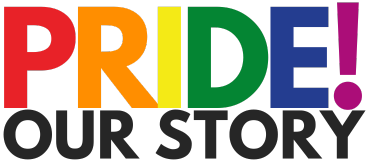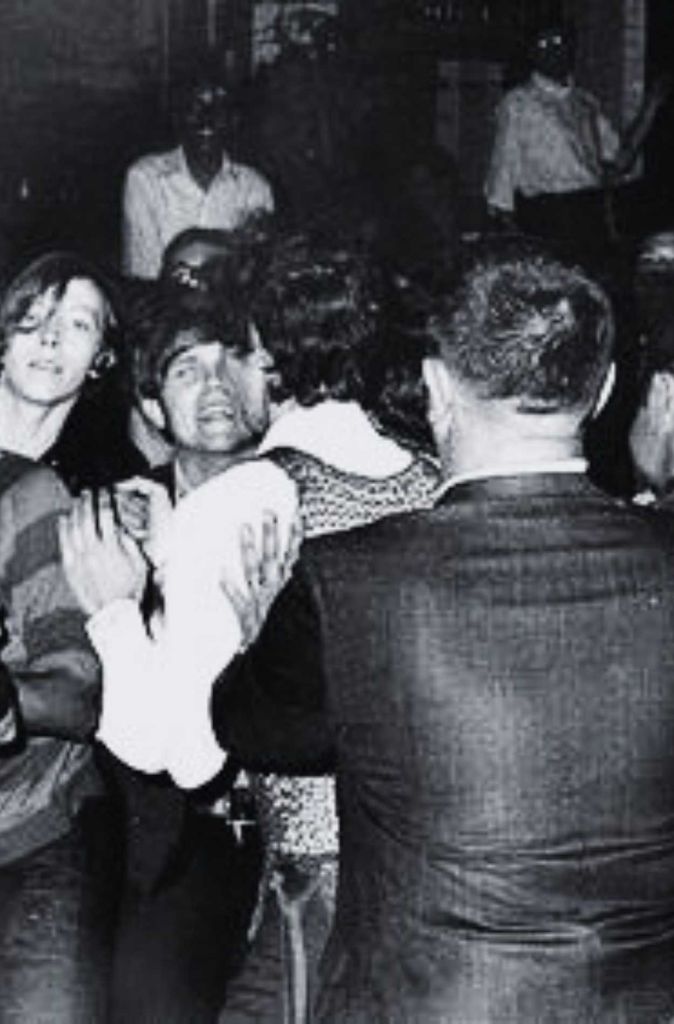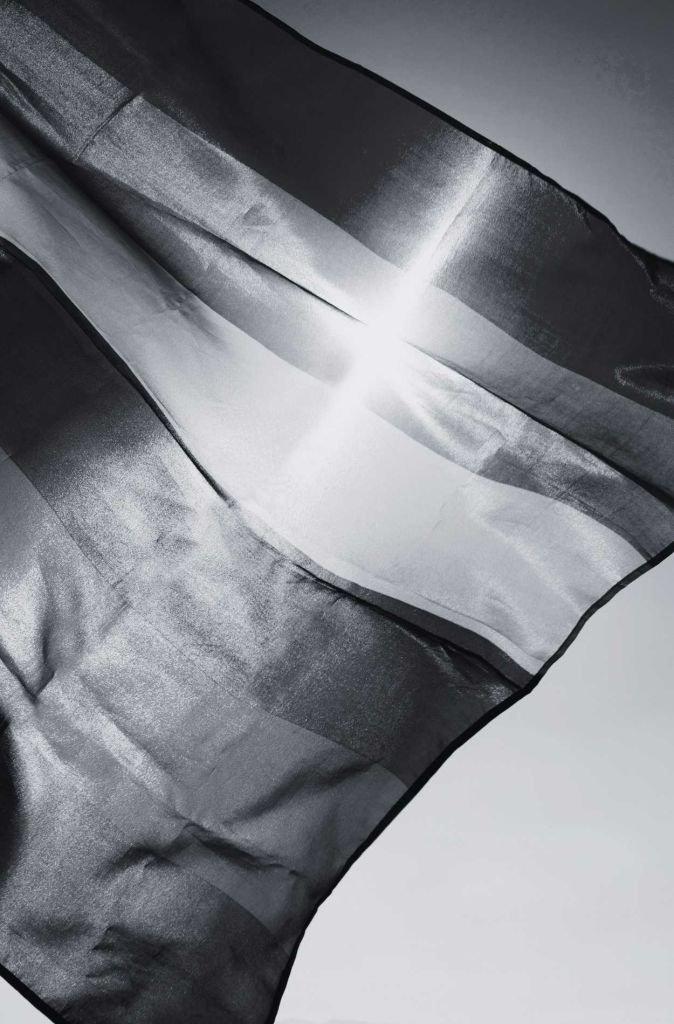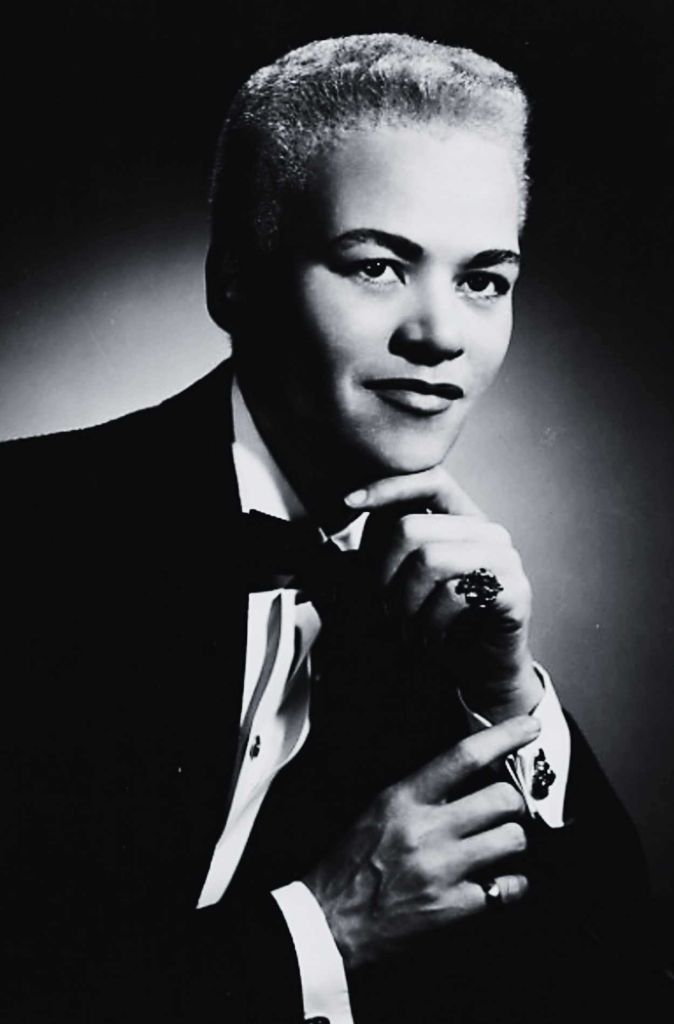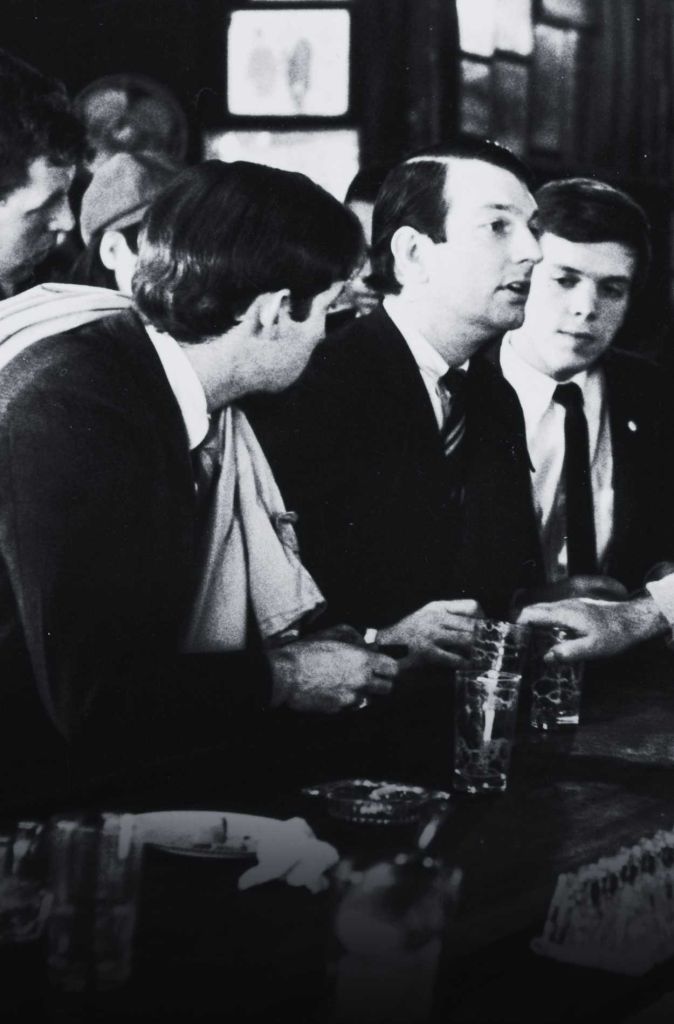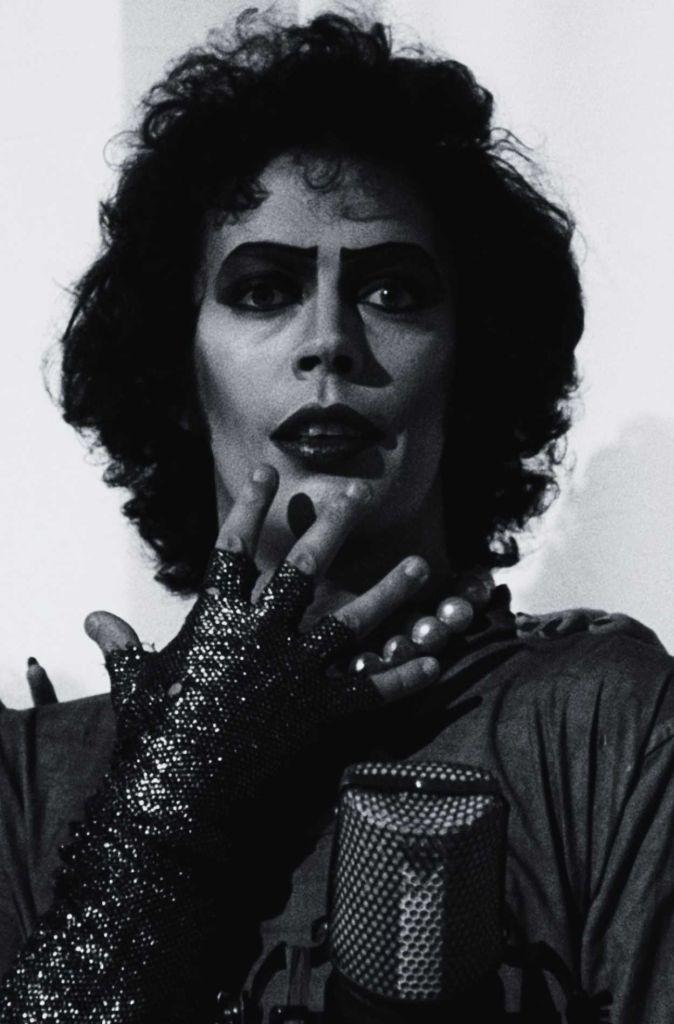Our Story
Created By
Get Ready For PRIDE!
In 2023, I developed the initial iteration of this exhibit, simply titled PRIDE!, following a request to curate and design an inaugural LGBTQ+ exhibition for a local historical society for the month of June that year.
That exhibit revolved around a timeline of important events in the history of the American LGBTQ+ rights movement, highlighting significant moments that have been pivotal in improving the lives of those individuals who are part of the LGBTQ+ community.
While it wasn’t without its critics- a reaction that was entirely expected given the topic- the exhibit’s success was undeniable, achieving recognition in multiple publications and even securing a local news segment. Among the many projects I’ve undertaken during my career as a graphic designer, that exhibit remains one of my most significant creations. However, as the exhibit concluded, I realized it deserved a far wider audience and should not be limited to a single showing.
In June 2024, I launched PRIDE! Our Story, an online exhibit designed to highlight the extraordinary contributions of those remarkable individuals who played a pivotal role in spearheading transformative change for the LGBTQ+ community. This online exhibit incorporates elements from the previous exhibit to create a more complete and comprehensive understanding of LGBTQ+ movement in the United States over the last century.
As a member of the LGBTQ+ community, I’m committed to developing PRIDE! Our Story as a valuable online exhibit and historical resource, continuously adding new content and features.
Now in its third year, PRIDE! Our Story continues to grow.
I’m excited to announce that this June will see the launch of an updated PRIDE! Our Story exhibit. To complement the launch of the new site, the exhibit will also have a social media presence to facilitate interaction and information sharing.
And, as a testament to its continuing success and importance, PRIDE! Our Story will launch as a physical exhibit on display throughout the month of June 2025, at the Huntington Public Library in Huntington, New York. I’m thrilled to bring this significant exhibit to life and have it on display in the town that hosts Long Island Pride!
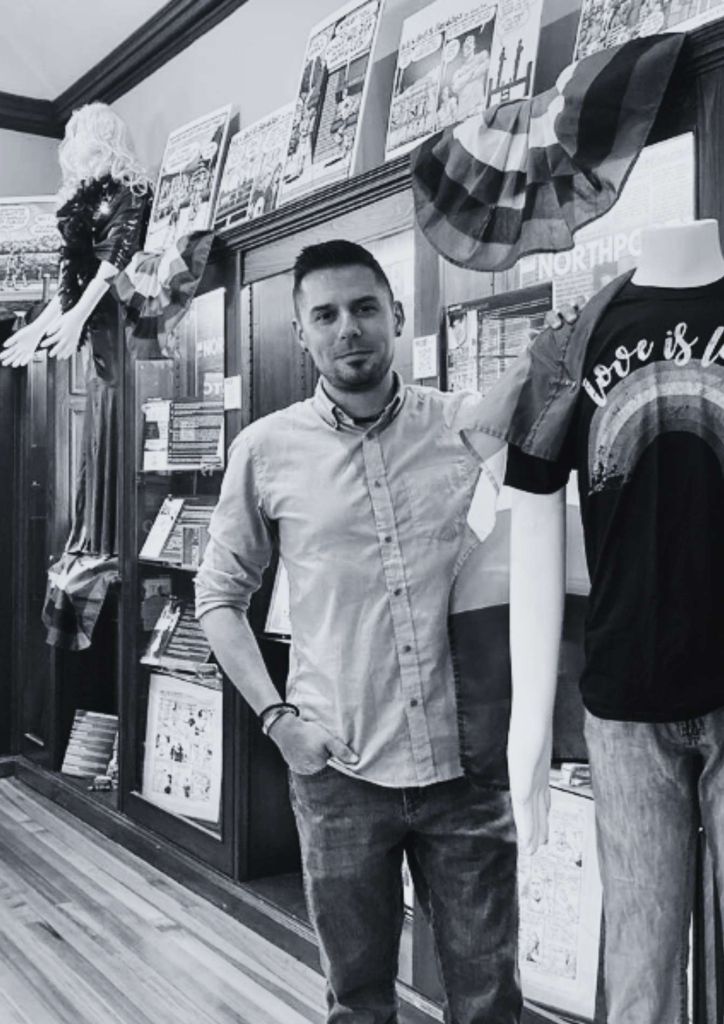
Our Story
Over the past century, the LGBTQ+ rights movement in the United States has made extraordinary strides…
- What was once considered taboo or even criminal is now increasingly recognized as a fundamental part of the American story.
- Legal prohibitions against same-sex relationships have been overturned, resulting in marriage equality and an unprecedented increase in the visibility and celebration of LGBTQ+ individuals and families.
- Public attitudes have also shifted, with growing support for equal rights and protections.
It was hard-won through decades of activism, resistance, and personal sacrifice. It was made possible by individuals who stood up against discrimination, risked their safety, and demanded dignity and justice when few others would.
This exhibit invites you to explore the journey of the LGBTQ+ rights movement through the lens of those trailblazers.
From early organizers and protestors to artists, educators, and elected officials, these are the people who helped change hearts, minds, and laws. Their stories remind us that progress is possible—but never guaranteed.
As the LGBTQ+ community continues to face new political, legal, and cultural challenges, we honor the legacy of those who came before, and recognize the ongoing work of those continuing the fight for equality, inclusion, and human rights today.
This is Our Story.
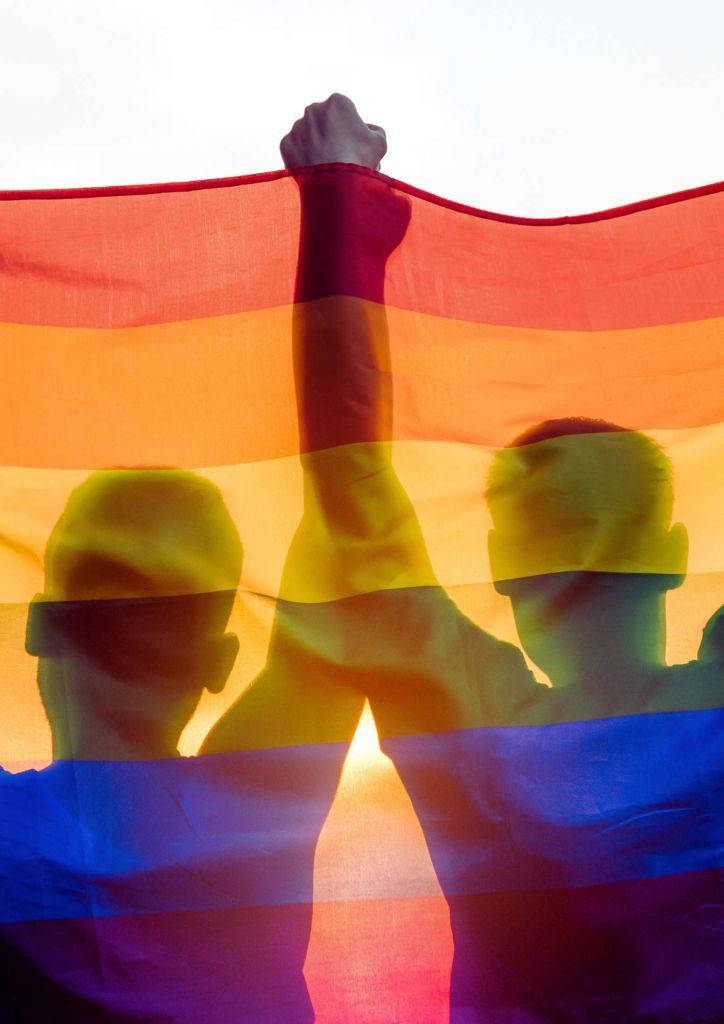
PRIDE in June?
The Stonewall Riots are regarded as the turning point that ignited the modern LGBTQ+ rights movement in the U.S.

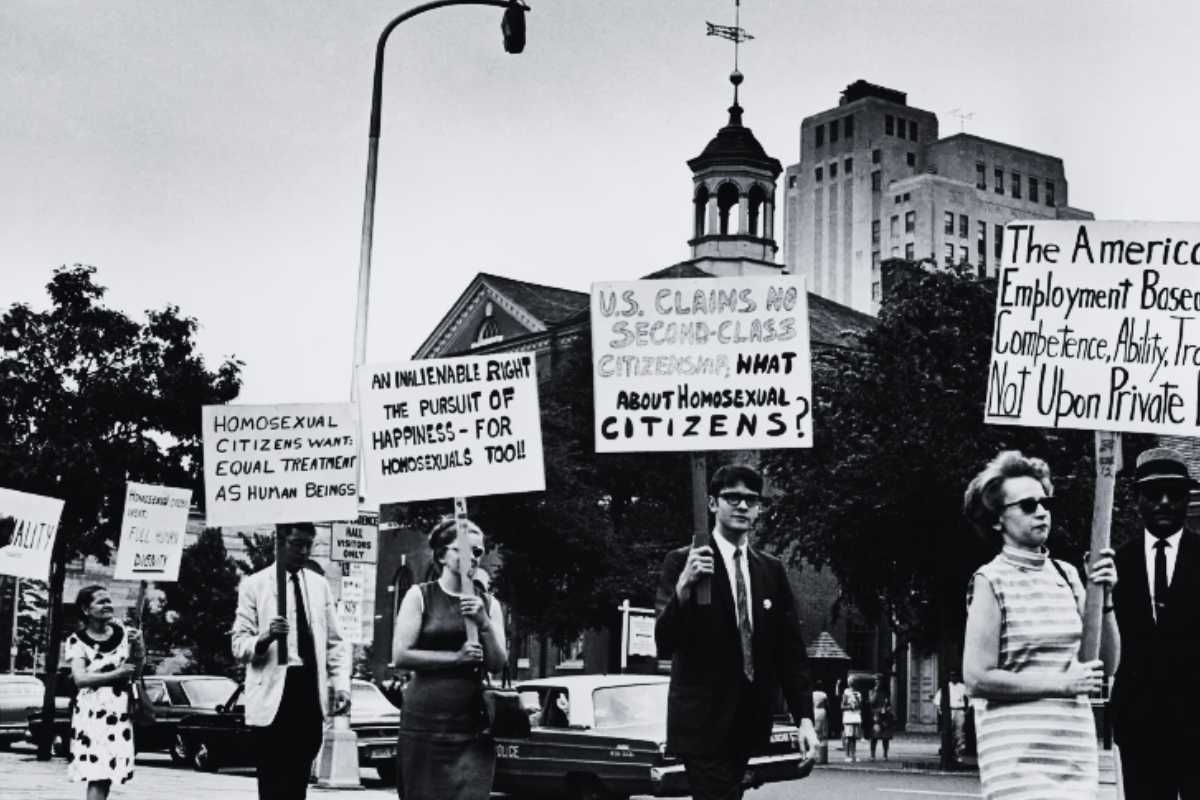
Click to learn more.
On June 28, 1969, a riot ensues at the Stonewall Inn, a gay bar in NYC’s Greenwich Village, after police raid the bar at 1am. When the police turned violent, Stonewall and other Village bar patrons and homeless LGBTQ individuals all join the fight.
While homosexuality was legal in the state of New York in the sixties, establishments that served alcohol to gay customers were considered by the State Liquor Authority to be “disorderly houses”.
The period immediately before June 28, 1969, was marked by frequent raids of Village bars.
Tensions between New York City Police and gay residents of Greenwich Village erupted into more protests the next evening and again several nights later.
Over the course of three days, thousands come out to protest against LGBTQ discrimination and injustice.
Activists gathered at the Eastern Regional Conference of Homophile Organizations in Philadelphia to discuss a coordinated response to Stonewall.
During the meeting, they propose organizing a national march to commemorate the events and demand equal rights.
Organizers ultimately chose “Gay Pride” as the theme to emphasize visibility, dignity, and self-affirmation.
The Christopher Street Liberation Day march takes place. Named after the street where the Stonewall Inn is located, it honored the one-year anniversary of the riots.
Thereafter, Pride became an annual tradition in the United States, typically celebrated on the last Sunday of June.
Over time, it grew from a single march into a nationwide—and eventually global—movement of parades, festivals, and activism.
Pride received official recognition from the U.S. government, when President Clinton declared it “Gay and Lesbian Pride Month.”
President Obama later broadened the observance to “LGBT Pride Month.”
President Biden expanded the designation to “Lesbian, Gay, Bisexual, Transgender, and Queer Pride Month.”
June continues to be the most widely recognized month of celebration, honoring the spirit of Stonewall and the ongoing fight for equality.
Pride Flags
There are over 50 Pride Flags recognized among the LGBTQ+ community, each used to symbolize different gender identities and sexual orientations.

Rainbow Flag
Designed in 1978 by artist and activist Gilbert Baker, the original Rainbow Flag was created to celebrate members of the gay and lesbian political movement.
It comprised eight colored stripes, each with a specific meaning, stacked on top of each other to evoke a rainbow - a symbol of hope.
Due to difficulties with the pink and turquoise fabric, both colors were removed—resulting in the six-color version.
Colors: Colors: Pink (sex), Red (life), Orange (healing), Yellow (sun), Green (nature), Turquoise (magic), Indigo (serenity), Violet (spirit)
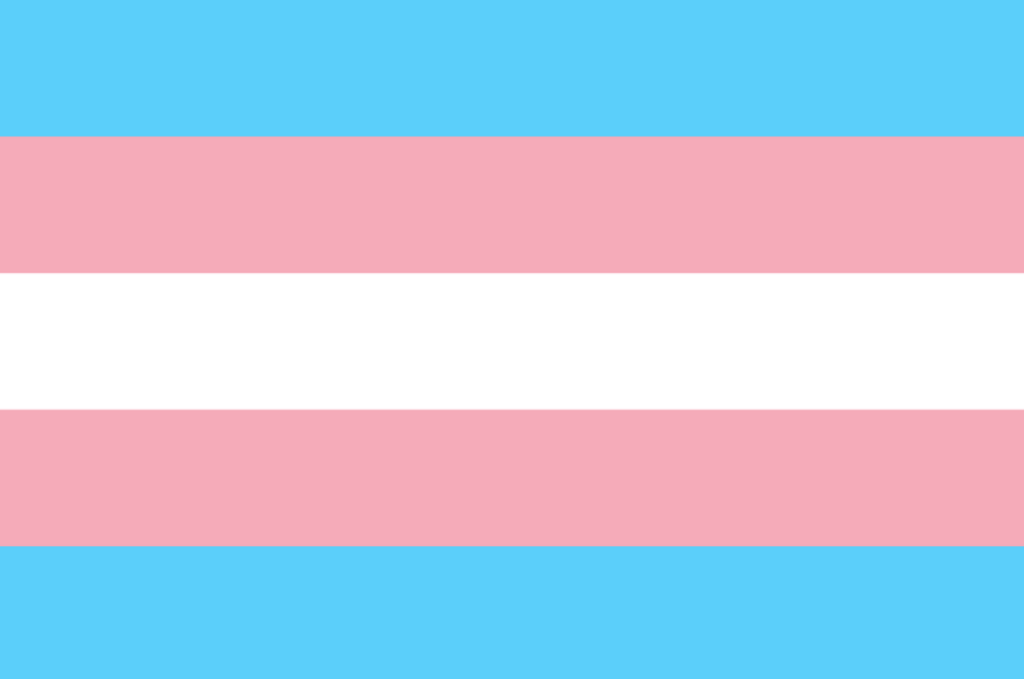
Transgender Flag
The Transgender Pride Flag is recognized worldwide as a symbol of the transgender community, though other flags are also embraced by various individuals, organizations, and groups within the broader transgender spectrum.
The most widely known was created in 1999 by activist Monica Helms. She designed the flag so the pattern always displays correctly.
Colors: Colors: Light Blue (boys), Pink (girls), White (neutral/undefined/transitioning).
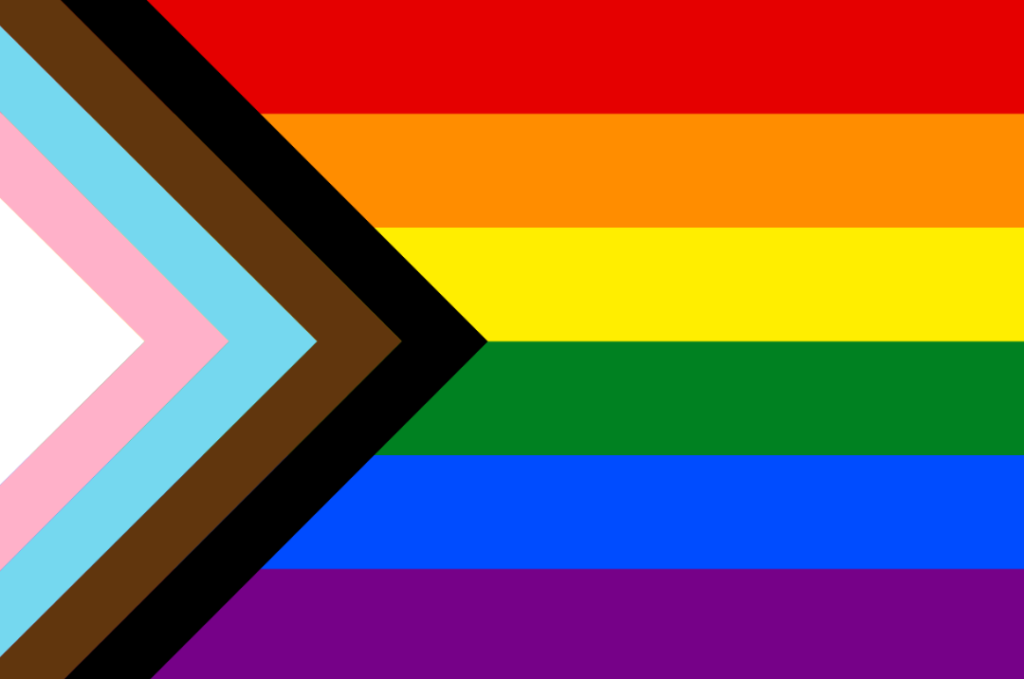
Progress Flag
The Progress Flag, an updated version of the Rainbow Flag, has undergone several design variations throughout its history.
In 2017, Gilbert Baker, created a nine-stripe version of the Rainbow Flag to better represent the concept of diversity.
In 2018, Daniel Quasar released a redesign using the Rainbow Flag, adding a chevron pattern.
Colors: Rainbow with chevron. Black, Brown (people of color), Light Blue, Pink (trans), White (those living with/lost to HIV/AIDS).
Read the stories of the remarkable individuals and organizations that have shaped LGBTQ+ history.
Founded by the Bavarian-born Henry Gerber (1892-1972), The Society For Human Rights is the first gay rights organization as well as the oldest documented in the U.S.
Inspired by his service in the U.S. Army of Occupation in Germany after World War I and exposure to the German homosexual emancipation movement, Henry Gerber returned to the United States determined to advocate for gay rights. In 1924, he founded the Society for Human Rights in Chicago—the first known gay rights organization in the United States. Operating out of his apartment at 1710 North Crilly Court, Gerber and a small group of supporters published Friendship and Freedom, the first-known gay-interest newsletter in the country.
The Society was short-lived. In 1925, after a co-founder’s wife reported her husband’s bisexuality, police raided Gerber’s home. He was arrested, prosecuted in three costly trials, and ultimately acquitted—but not before losing his job at the post office and his life savings. Authorities confiscated all materials related to the Society, including Gerber’s typewriter.
Despite these setbacks, Gerber continued his advocacy by creating a nationwide gay correspondence club and writing for gay publications under a pseudonym. He lived to see the Stonewall Riots and the emergence of a new era of LGBTQ+ activism. Gerber died in 1972 at the U.S. Soldiers’ and Airmen’s Home in Washington, D.C., at the age of 80.
Today, the Henry Gerber House is designated a National Historic Landmark, honoring his pioneering role in the American gay rights movement.

Activist Harry Hay (1912-2002) founded America’s first sustained national gay rights organization: The Mattachine Society in 1950. The society was one of several prominent groups during the period of LGBTQ+ activism, known as The Homophile Movement.
In 1948, activist Harry Hay conceived the idea of a gay rights organization, initially envisioning a group called “Bachelors for Wallace” after supporting presidential candidate Henry A. Wallace. Inspired by the response, he drafted The Call, a foundational document for organizing gay men, though early interest waned.
Over the next two years, Hay refined his vision into a “service and welfare organization” for what he termed Society’s “Androgynous Minority,” modeled loosely on Alcoholics Anonymous. On November 11, 1950, he and four others held the first meeting of what they called the Society of Fools in Los Angeles.
By 1951, they adopted the name Mattachine Society, referencing medieval French secret societies that used anonymity to safely challenge authority. The Mattachine Society became one of the first sustained gay rights organizations in the U.S.
The group played a pivotal role in early LGBTQ+ activism, including the 1966 “sip-in” at Julius Bar in New York City, which led to a court ruling that bars could not deny service to homosexuals—marking a major step toward equal rights.

Founded in San Francisco in 1955 by partners Del Martin (1921-2008) and Phyllis Lyon (1924-2020), the Daughters of Bilitis (DOB) was the first lesbian civil and political rights organization in the United States.
Created during a time of intense social repression, DOB provided a safe, private space for women who faced discrimination, harassment, and isolation. As Martin and Lyon explained, women needed protection “not only from the watchful eye of the police, but from gaping tourists in the bars and from inquisitive parents and families.”
Though unsure of its direction at first, the group held regular meetings, elected Martin as president, and focused early on education—aiming to help lesbians combat internalized shame and find community. At their second meeting, members chose the name Daughters of Bilitis, referencing a fictional lesbian figure in a 19th-century French poetry collection. The name’s obscurity allowed them to maintain discretion; as Lyon later joked, “we could always say we belong to a poetry club.”
DOB members adopted the motto “Qui vive” (“on alert”), designed pins, and selected club colors to subtly identify each other. They filed for non-profit status in 1957, describing their purpose vaguely enough that, according to Lyon, “it could have been a charter for a cat-raising club.”
In 1956, Martin and Lyon launched The Ladder, the first nationally distributed lesbian magazine in the U.S. The publication, supported by ONE, Inc. and the Mattachine Society, became a vital forum for lesbian voices and ideas, circulating until 1972. Through quiet determination, the Daughters of Bilitis helped lay the foundation for the modern LGBTQ+ rights movement.
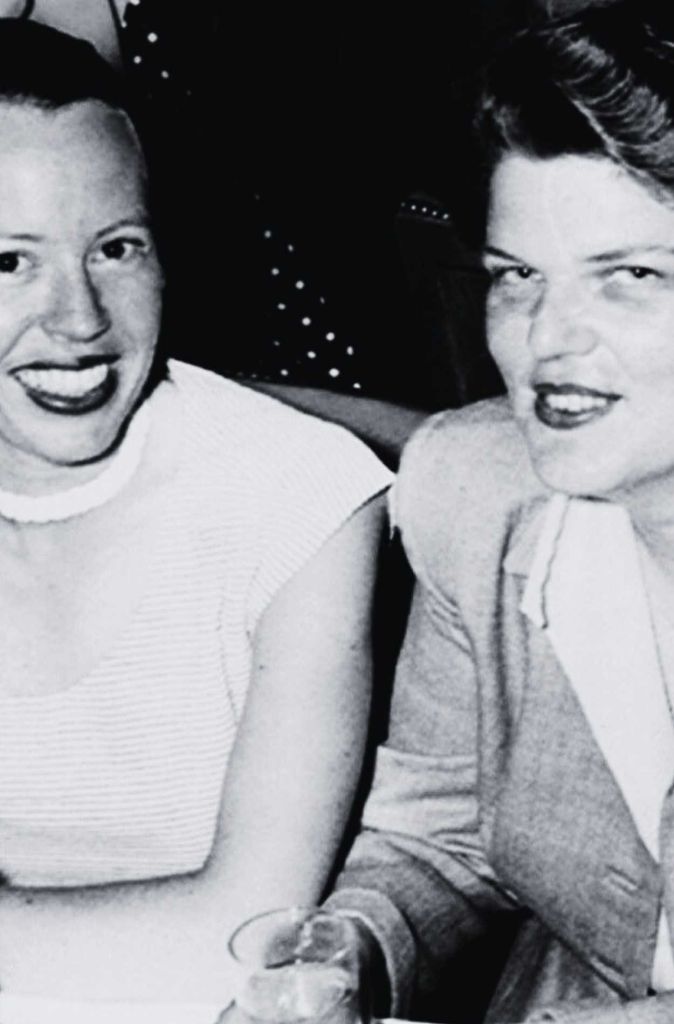
Jeanne Manford (1920-2019) founded PFLAG an organization for the parents of gays and lesbians as “a bridge between the gay community and the heterosexual community.”
In 1972, after her son Morty—a gay activist—was beaten during a protest in New York City, schoolteacher Jeanne Manford (1920–2019) publicly spoke out. She wrote a letter to the New York Post identifying herself as the mother of a gay man and criticizing police inaction. Weeks later, she marched with Morty in the New York Pride Parade, carrying a sign that read, “Parents of Gays Unite in Support for Our Children.”
Encouraged by the response, Jeanne and her husband began hosting support meetings for parents of gay and lesbian children. The first meeting of what would become PFLAG (Parents, Families, and Friends of Lesbians and Gays) was held later that year at a Manhattan church. The group became a national network, offering support and advocacy for LGBTQ+ individuals and their families.
Manford continued her activism for decades, serving as grand marshal of multiple pride marches and founding a PFLAG chapter in Queens. In 2013, she was posthumously awarded the Presidential Citizens Medal for her pioneering role in LGBTQ+ advocacy.
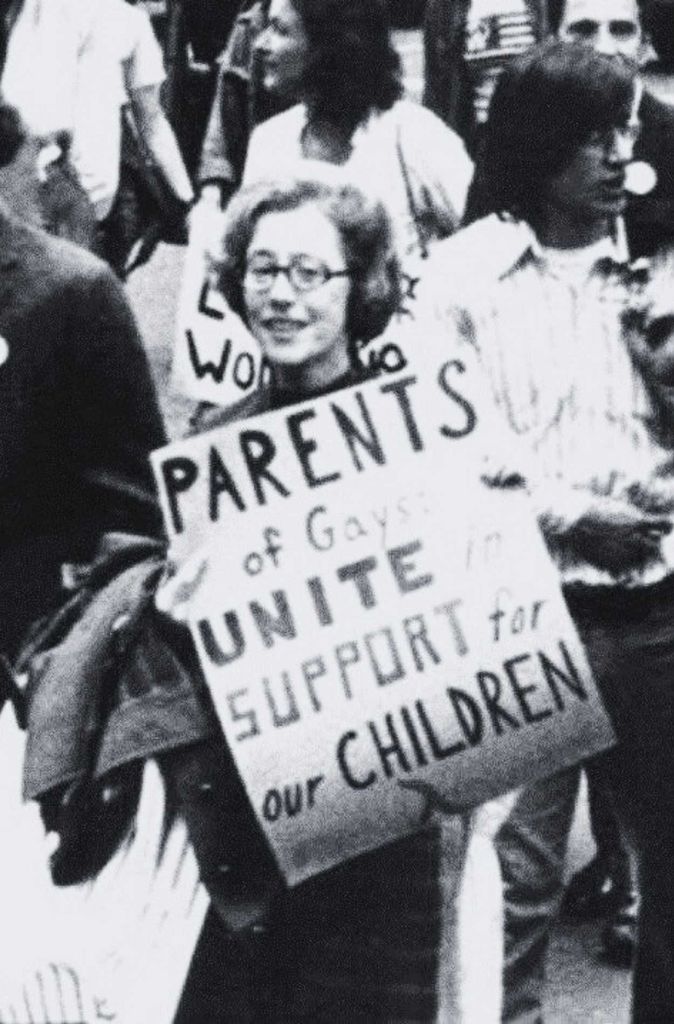
Harvey Bernard Milk (1930-1978) was the first openly gay man to be elected to public office in California, as a member of the San Francisco Board of Supervisors.
In 1972, Harvey Milk settled in San Francisco’s Castro District, a neighborhood rapidly becoming a haven for gay men and lesbians. There, he opened a camera shop that became a hub for political discussion and community organizing. Disillusioned with the cautious approach of existing gay leaders, Milk called for more assertive action to demand civil rights and representation.
Milk ran for public office several times before finally winning a seat on the San Francisco Board of Supervisors in 1977. During his time in office, he introduced and helped pass a groundbreaking gay rights ordinance that protected people from being fired based on their sexual orientation. He also led a successful campaign against the Briggs Initiative, a California ballot measure that would have banned LGBTQ+ individuals from working a
On November 27, 1978, Harvey Milk and Mayor George Moscone were assassinated at City Hall by former supervisor Dan White. Milk’s assassination stunned the nation and became a rallying point for LGBTQ+ rights. Thousands mourned in a candlelight vigil through the streets of San Francisco.
Milk’s life and death marked a turning point in American queer history. His courage, charisma, and unapologetic visibility inspired a new generation of LGBTQ+ activists.

Christine Jorgensen (1926-1989) was an American actress, singer, recording artist, and transgender activist who garnered international headlines in the early 1950s as the first person in the U.S. to undergo a successful gender-reassignment operation.
Christine Jorgensen, born George William Jorgensen, Jr., served in the U.S. Army during World War II and later pursued studies and a photography career. In the early 1950s, Jorgensen traveled to Denmark to undergo sex reassignment surgery—becoming the first American widely known for transitioning.
Jorgensen’s return to the U.S. made headlines; the New York Daily News featured her story on its front page, instantly making her a national celebrity. Known for her grace, intelligence, and sharp wit, Jorgensen used her unexpected fame to advocate for greater understanding and acceptance of transgender people.
For years, she was the primary public figure associated with transgender identity and gender-affirming surgery. Her 1967 memoir, Christine Jorgensen: A Personal Autobiography, became a bestseller, selling nearly 450,000 copies. She toured colleges and universities, speaking openly about her experiences and gender identity. Though originally identified with the term “transsexual,” Jorgensen later preferred the term “transgender,” helping to shape the evolving language and visibility of the trans community.

Stormé DeLarverie (1920–2014) was a gay civil rights icon and entertainer known as the “butch lesbian” whose scuffle with police ignited the Stonewall uprising, spurring the crowd to action.
Born in New Orleans to a Black mother and white father, DeLarverie toured the country with the Jewel Box Revue, America’s first integrated drag‐entertainment troupe. Billed as “Stormy Dale,” she was the show’s sole woman, dazzling audiences as a suave male impersonator in tailored suits and crooning baritone love songs. Her polished style and unapologetic gender‑bending made her a fashion icon for countless “butch” lesbians who saw in her a confident reflection of themselves.
DeLarverie is indelibly linked to the 1969 Stonewall uprising. Eyewitnesses credit her with resisting police—after officers attempted to arrest her outside the Stonewall Inn. As she was handcuffed, she reputedly shouted to onlookers, “Why don’t you guys do something?”—a challenge that helped ignite the night’s rebellion.
After Stonewall, she became a well-known protector of the LGBTQ+ community in New York City. Known as the “guardian angel” of the Village, she was also active in supporting women’s shelters and Pride events.
Stormé DeLarverie died in Brooklyn at the age of 93, but her legacy of courage, style, and steadfast protection lives on. She is celebrated as a catalyst of Stonewall, a trailblazer in gender performance, and a reminder that one person’s resolve can rally a movement and safeguard a community.
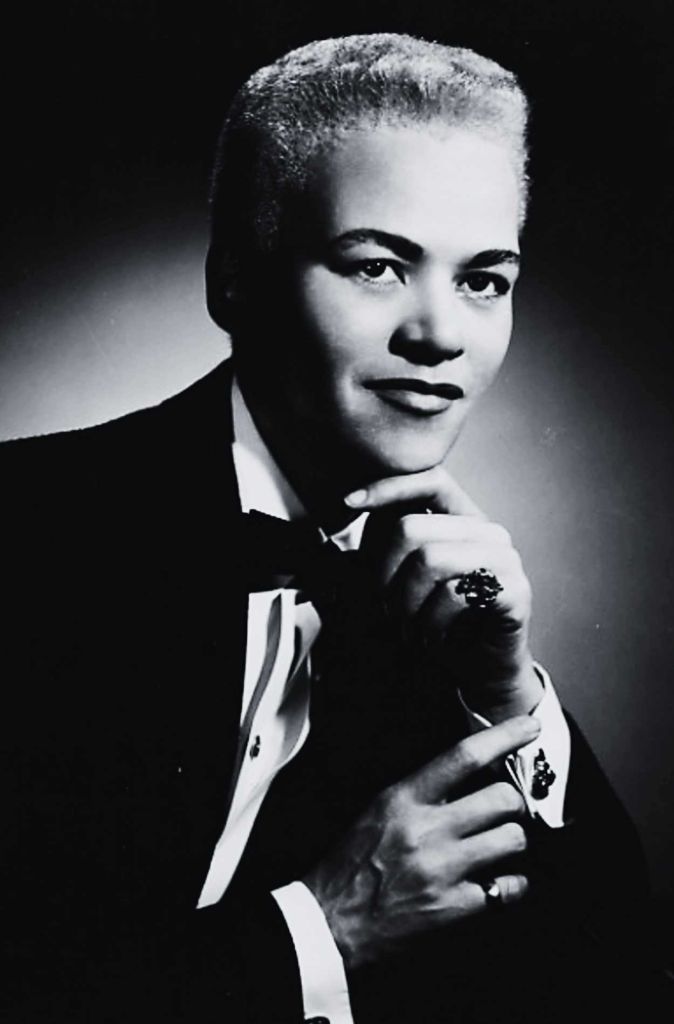
Marsha P. Johnson (1945 – 1992) was an American gay liberation activist and self-identified drag queen. Johnson and friend, Sylvia Rivera (1951-2002) co-founded the organization Street Transvestite Action Revolutionaries (STAR).
Marsha P. Johnson was a pioneering Black activist, drag performer, and beloved figure in the LGBTQ+ rights movement. Born Malcolm Michaels, Jr. in New Jersey, she adopted the name Marsha P. Johnson after moving to New York City—saying the “P” stood for “Pay it no mind.”
A vibrant and recognizable presence in Greenwich Village, Johnson was known both for her bold, expressive style and her deep compassion. In 1970, alongside fellow activist Sylvia Rivera, she co-founded Street Transvestite Action Revolutionaries (STAR)—one of the first organizations in the U.S. to support homeless LGBTQ+ youth. With few resources, Johnson and Rivera operated the shelter that provided food, clothing, and safety for those often excluded from mainstream society.
Johnson’s untimely and suspicious death in 1992, initially ruled a suicide, has since been reexamined amid widespread calls for justice. Her legacy has grown in recent years through documentaries, public memorials, and renewed appreciation of her fearless advocacy.
Today, Marsha P. Johnson is remembered as a symbol of resistance, generosity, and radical love—an enduring inspiration in the fight for LGBTQ+ rights.
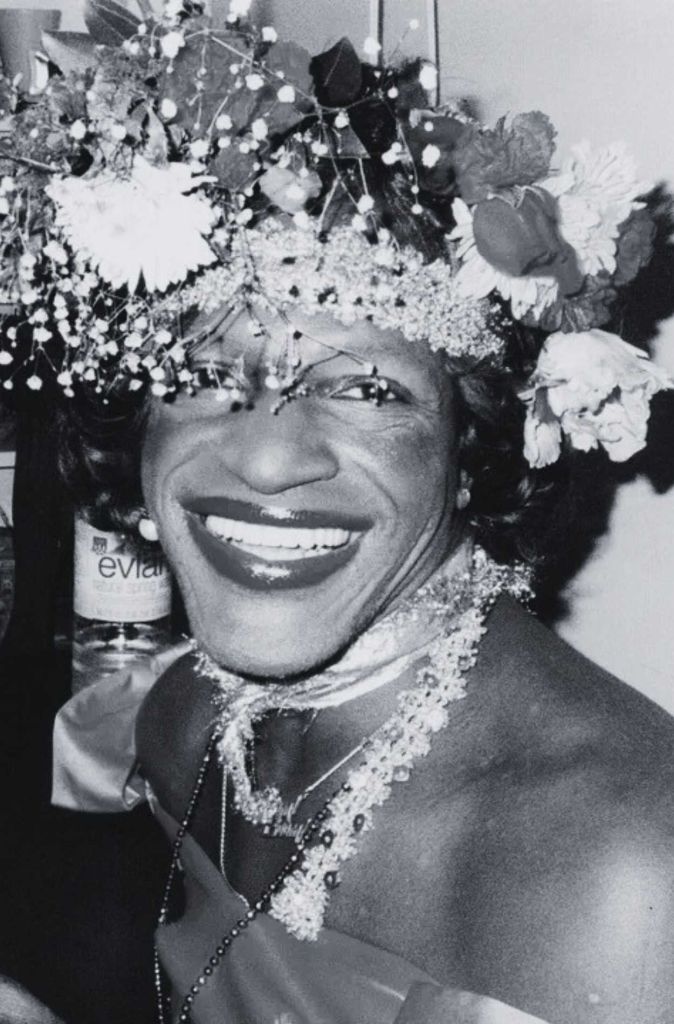
Edith Windsor (1929-2017) was an American LGBTQ+ rights activist and lead plaintiff in the Supreme Court case that overturned Section 3 of the Defense of Marriage Act and was considered a landmark legal victory for the same-sex marriage movement in the U.S.
In 2007, Edith Windsor married her partner of over 40 years, Thea Spyer, in Toronto after Spyer suffered a heart attack and was given less than a year to live. When Spyer passed away in 2009, Windsor was hit with a $350,000 federal estate tax bill—solely because the U.S. government did not recognize their marriage under the Defense of Marriage Act (DOMA). Had their marriage been federally acknowledged, Windsor would have owed nothing.
Determined to seek justice, Windsor challenged DOMA in court. Her landmark case, United States v. Windsor, reached the U.S. Supreme Court, which ruled in 2013 that Section 3 of DOMA was unconstitutional. The decision was a turning point in the fight for marriage equality in the United States.
Following her historic victory, Windsor remained a vocal advocate for LGBTQ+ rights. That same year, Time magazine named her a finalist for Person of the Year, recognizing her profound impact on civil rights and equality, however, Pope Francis took the title.
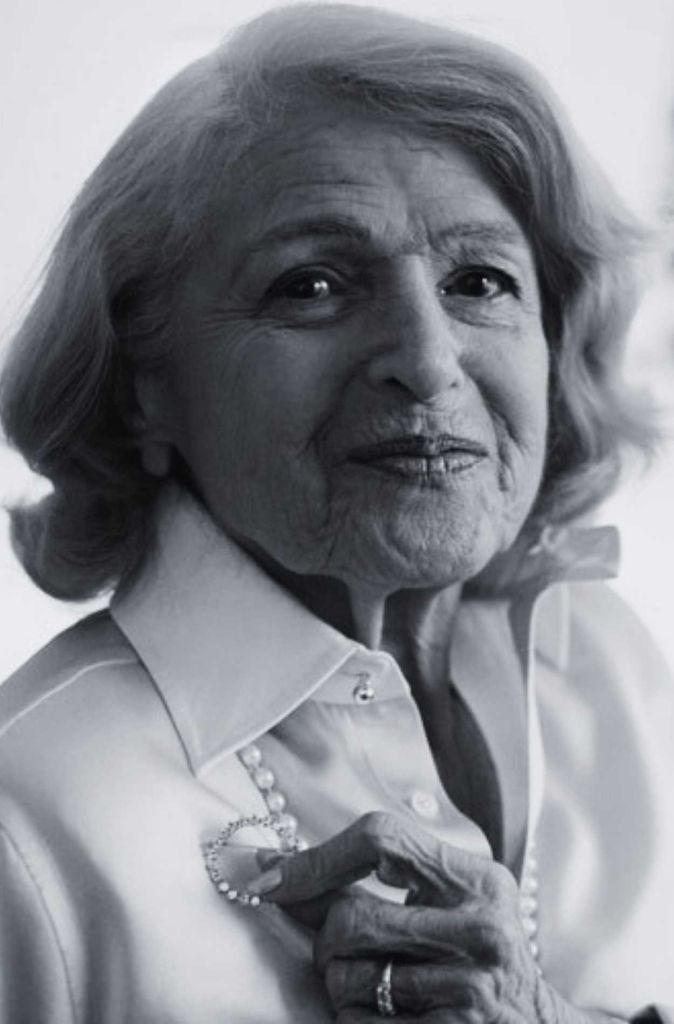
In 1978, San Francisco Supervisor Harvey Milk challenged his friend Gilbert Baker (1951–2017) to create a symbol of pride for the gay community. Inspired by the American flag, Baker hand-sewed the first rainbow flag, using vibrant colors to reflect the diversity and unity of LGBTQ+ people.
A former Army medic, Baker was honorably discharged before diving into activism. He learned to sew from a fellow protester and soon became known for crafting bold, beautiful banners for gay rights and anti-war marches. With a sense of flair and humor, he sometimes performed under the drag name “Busty Ross,” a playful nod to Betsy Ross.
Baker’s rainbow design became a global emblem of pride and resistance. In 1994, he stitched the world’s largest flag (at the time) to celebrate the 25th anniversary of the Stonewall riots. For the flag’s 25th anniversary in 2003, he created a massive version stretching from the Gulf of Mexico to the Atlantic Ocean in Key West. Pieces of that flag were later sent to over 100 cities around the world, spreading its message of inclusion across continents.
Today, Baker’s rainbow flag remains one of the most recognizable symbols of the LGBTQ+ movement—a legacy of visibility, love, and fearless creativity.
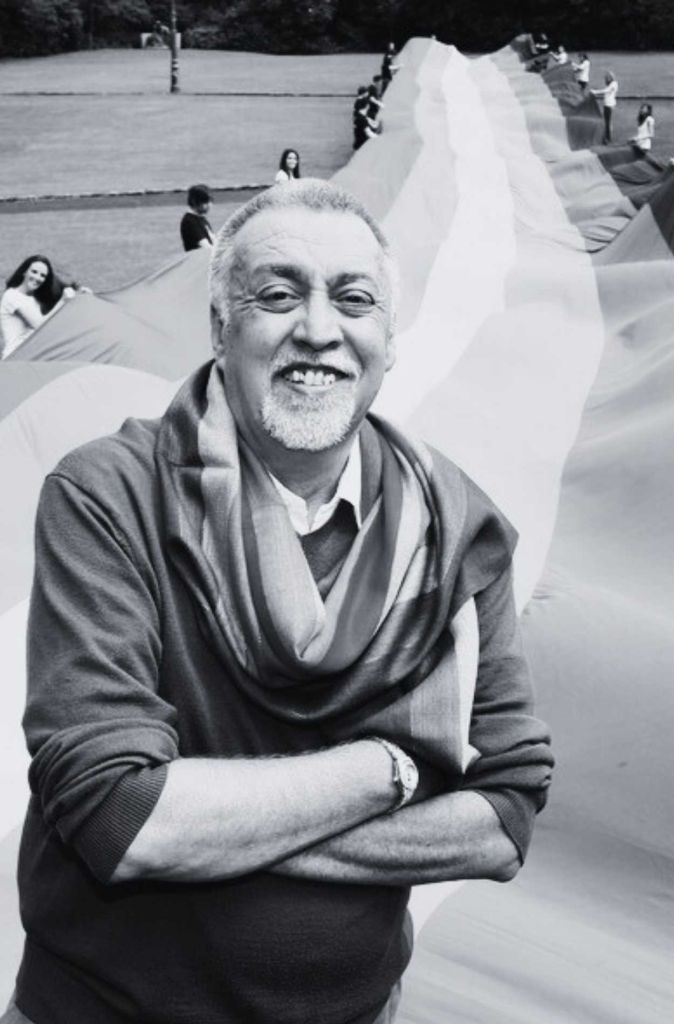


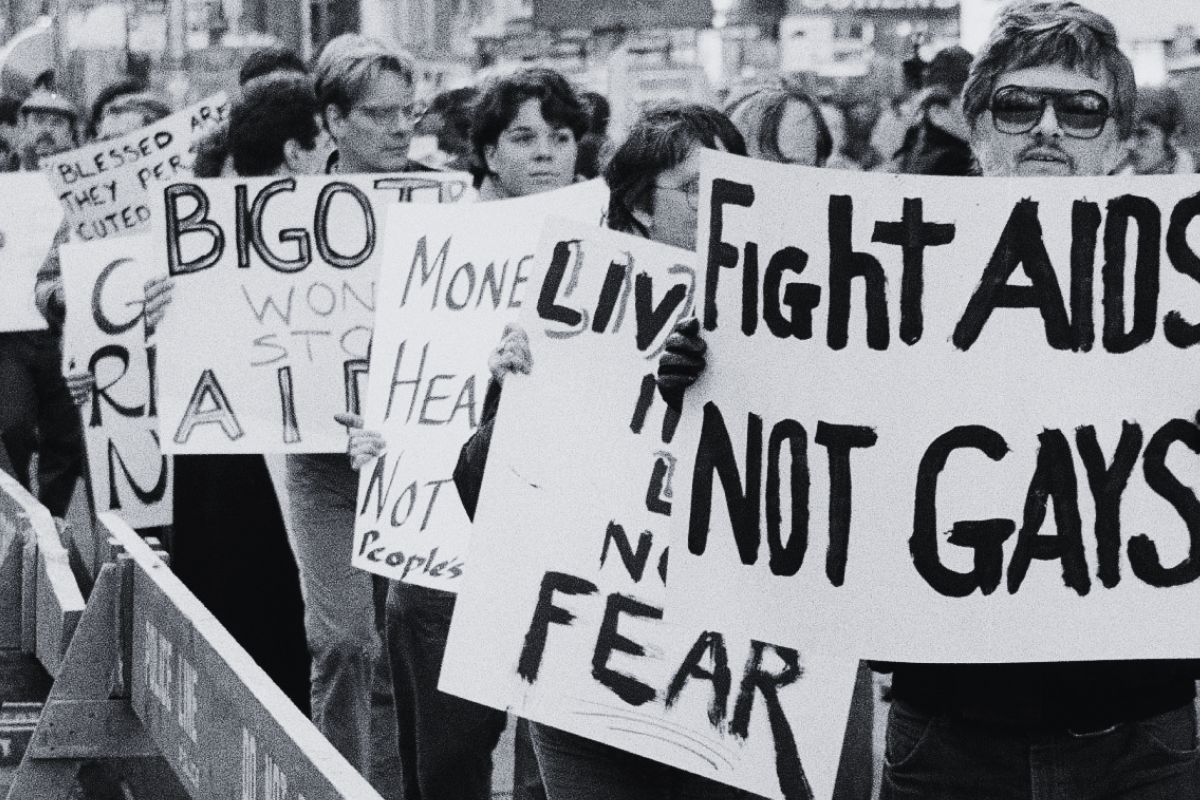
Navigate through the timeline of unforgettable moments in LGBTQ+ history in America, spanning from the early 1900s to the present.
Nov. 11, 1950
Harry Hay creates The Mattachine Society. The group aimed to improve the rights and social status of gay men.
Dec. 15, 1950
A Senate report states “homosexuals have a mental illness, and “constitute security risks” to the nation. The report is distributed to Congress.
April 1952
The American Psychiatric Association lists homosexuality as a sociopathic personality disturbance in its first publication of the Diagnostic and Statistical Manual of Mental Disorders.
Jan. 1, 1962
Illinois repeals its sodomy laws, becoming the first U.S. state to decriminalize homosexuality.
July 4, 1965
At Independence Hall in Philadelphia, picketers begin staging the first Reminder Day to call public attention to the lack of civil rights for LGBT people. The gatherings will continue annually for five years.
April 21, 1966
The Julius Bar “Sip-In”: Members of the Mattachine Society staged a “sip-in” at Julius’ Bar in New York City to protest laws that prohibited serving alcohol to openly gay patrons. The action led to a landmark court ruling affirming that LGBTQ+ people could not be denied service simply for their identity.
June 28, 1970
Christopher Street Liberation Day: A march takes place in New York City, marking the first anniversary of the Stonewall Riots.
Dec. 15, 1973
The board of the American Psychiatric Association votes to remove homosexuality from its list of mental illnesses.
July 3, 1981
The New York Times prints the first story of a rare pneumonia and skin cancer found in 41 gay men in New York and California. The CDC initially refers to the disease as GRID, Gay Related Immune Deficiency Disorder.
Mar. 10, 1987
AIDS advocacy group ACT UP (The AIDS Coalition to Unleash Power) is formed in response to the devastating affects the disease has had on the gay and lesbian community in New York.
Aug. 18, 1990
Ryan White Care Act: President George Bush signs the Ryan White Care Act, a federally funded program for people living with AIDS.
1991
The Red Ribbon: Created by the New York-based Visual AIDS, the red ribbon is adopted as a symbol of awareness and compassion for those living with HIV/AIDS.
Dec. 21, 1993
Don’t Ask, Don’t Tell: The Department of Defense issues a directive prohibiting the U.S. Military from barring applicants from service based on their sexual orientation.
April 26, 2000
Vermont becomes the first state in the U.S. to legalize civil unions and registered partnerships between same-sex couples.
May 18, 2004
Massachusetts Gay Marriage Passes: Massachusetts becomes the first state to legalize gay marriage.
Dec. 18, 2010
The U.S. Senate repeals “Don’t Ask, Don’t Tell” policy, allowing gays and lesbians to serve openly in the U.S. Military.
Feb. 23, 2011
President Obama states his administration will no longer defend the Defense of Marriage Act.
June 24, 2011
New York Marriage Equality Act: New York State passes the Marriage Equity Act, becoming the largest state thus far to legalize gay marriage.
June 26, 2013
United States v. Windsor: The Supreme Court finds Section 3 of DOMA to be unconstitutional after widower, Edith Windsor, sought to claim the federal estate tax exemption for surviving spouses.
June 26, 2015
Obergefell vs. Hodges: The U.S. Supreme Court rules all fifty states, the District of Columbia, and the Insular Areas to perform and recognize the marriages of same-sex couples on the same terms and conditions as the marriages of opposite-sex couples, with all the accompanying rights and responsibilities.
Jan. 20, 2025
Executive Order 14168: President Trump signs an order banning transgender people from military service.
Jan. 27, 2025
Executive Order 14183: President Trump signs an order directing the U.S. government to completely remove all federal protections for transgender individuals, and remove all recognition of transgender identity.
Feb. 2025
The CDC orders its scientists to retract any not yet published research with “banned terminology” including Gender, LGBT, Transgender, Non-Binary. All references to transgender people and gender identity are removed from their website.
The National Park Service removes all references to the existence of transgender people and transgender rights from its webpages covering the Stonewall National Monument, the Stonewall Riots, and LGBTQ+ history, changing the acronym from “LGBTQ+” to “LGB”.
The term “drag” is believed to have originated in the theater. When men played female parts, they would discuss how their costumes would “drag” across the floor.
In the 16th and 17th centuries, women were banned from the stage due to religious and cultural norms. As a result, male actors played all roles—including female characters.
By the early 20th century, female impersonation became a highlight of Vaudeville entertainment. One of its biggest stars was Julian Eltinge (1881-1941), widely considered the first well-known drag queen in American history.
During the 1930s, Prohibition gave rise to underground speakeasies where LGBTQ+ communities found refuge. Drag performances flourished in these hidden venues, leading to what became known as the “Pansy Craze“—a time when queer nightlife and gender expression thrived outside the public eye.
In the 1960s, Mother Flawless Sabrina (1939-2017) began hosting national drag pageants modeled after mainstream beauty contests. Sabrina was one of the first widely-known drag queens in the United States. Her public appearances in drag—including on talk shows—challenged societal norms and paved the way for wider acceptance.
In the 1970s, LGBTQ+ people of color created vibrant drag ball cultures in neighborhoods like Harlem and Washington Heights.
At the same time, drag entered popular culture through gender-bending performances by artists like Tim Curry in The Rocky Horror Picture Show and David Bowie in music and fashion.
The 1980s brought a wave of gender experimentation in pop culture. Artists like Boy George and Pete Burns pushed boundaries through music and style.
Meanwhile, RuPaul began performing in New York City clubs, becoming a central figure in the drag scene.
In the 1990s, RuPaul made history as the first drag queen to become a spokesperson for a major cosmetics brand (MAC). He hosted a VH1 talk show and a popular morning radio program, helping drag reach mainstream audiences.
In 2009, RuPaul launched RuPaul’s Drag Race, a reality competition series that continues to spotlight and celebrate drag artistry around the world.
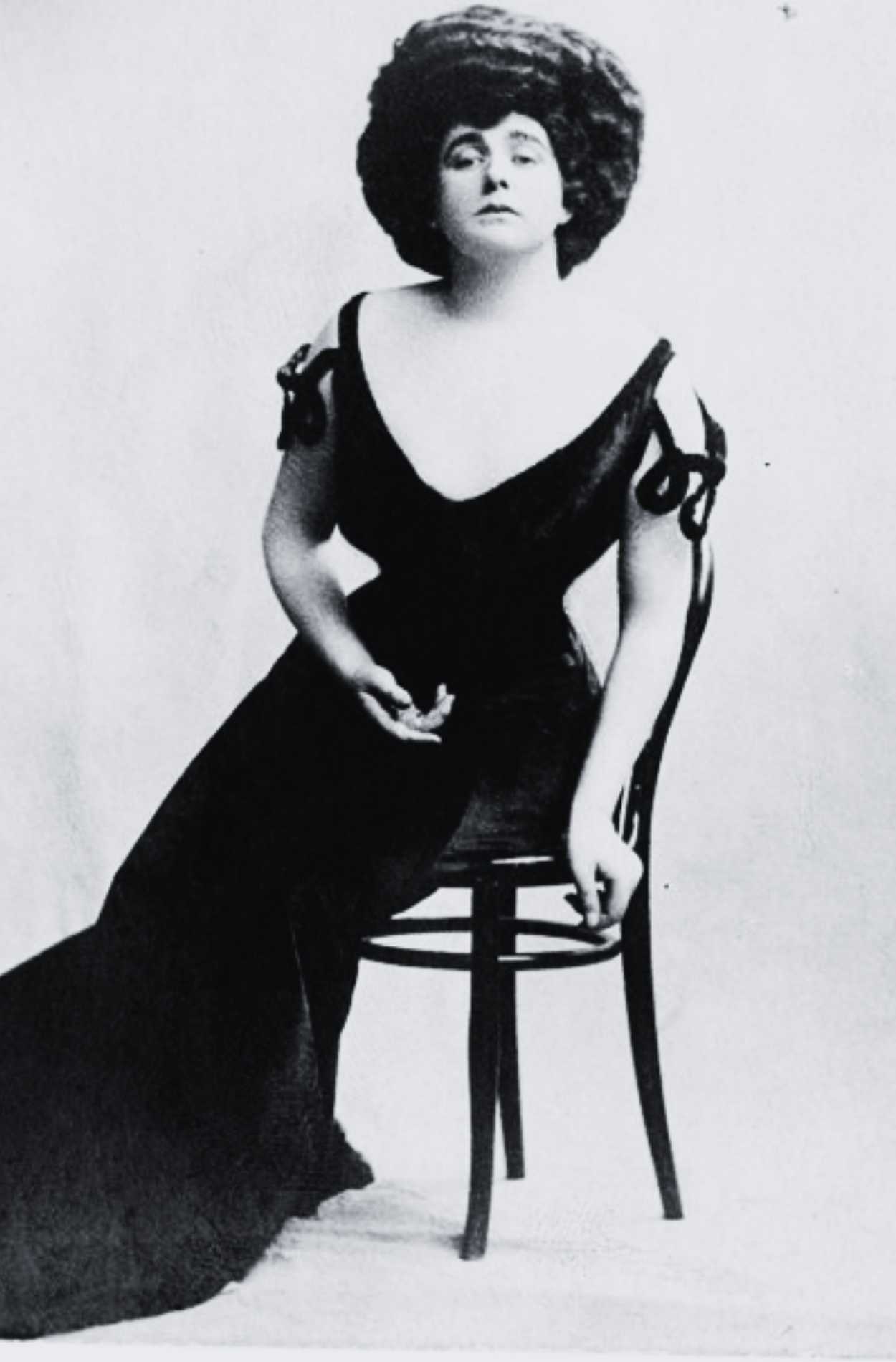
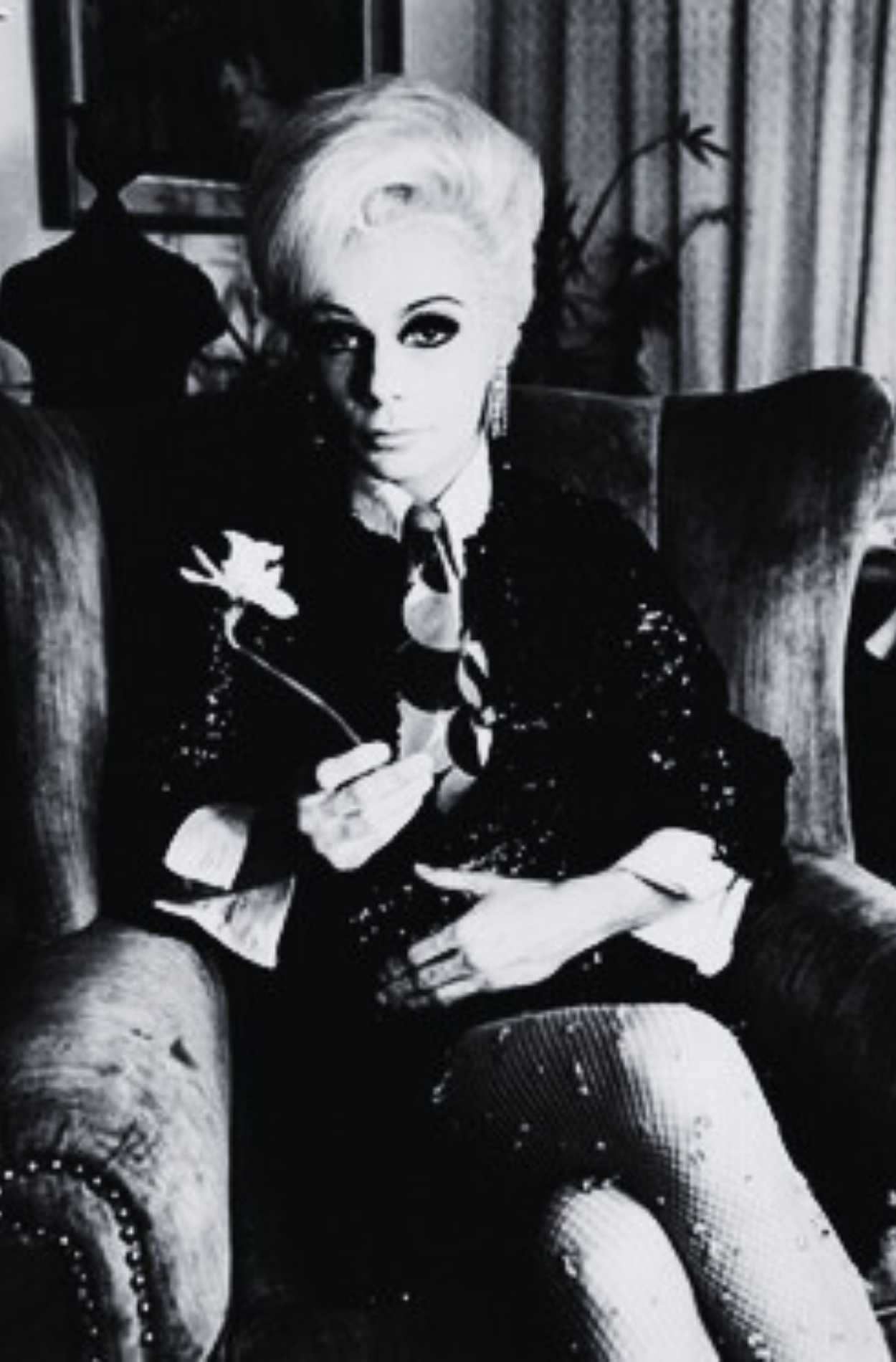


The TV shows and movies that broke barriers and played a pivotal role in shaping LGBTQ+ culture.

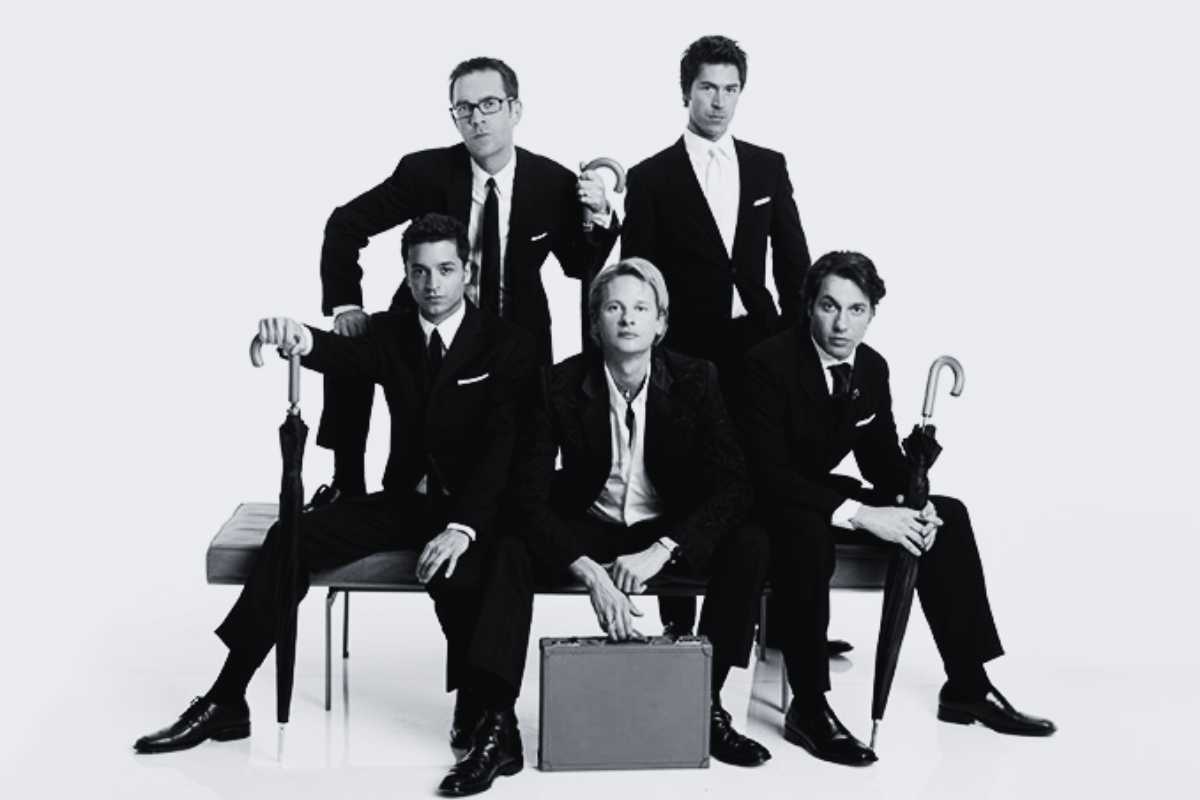
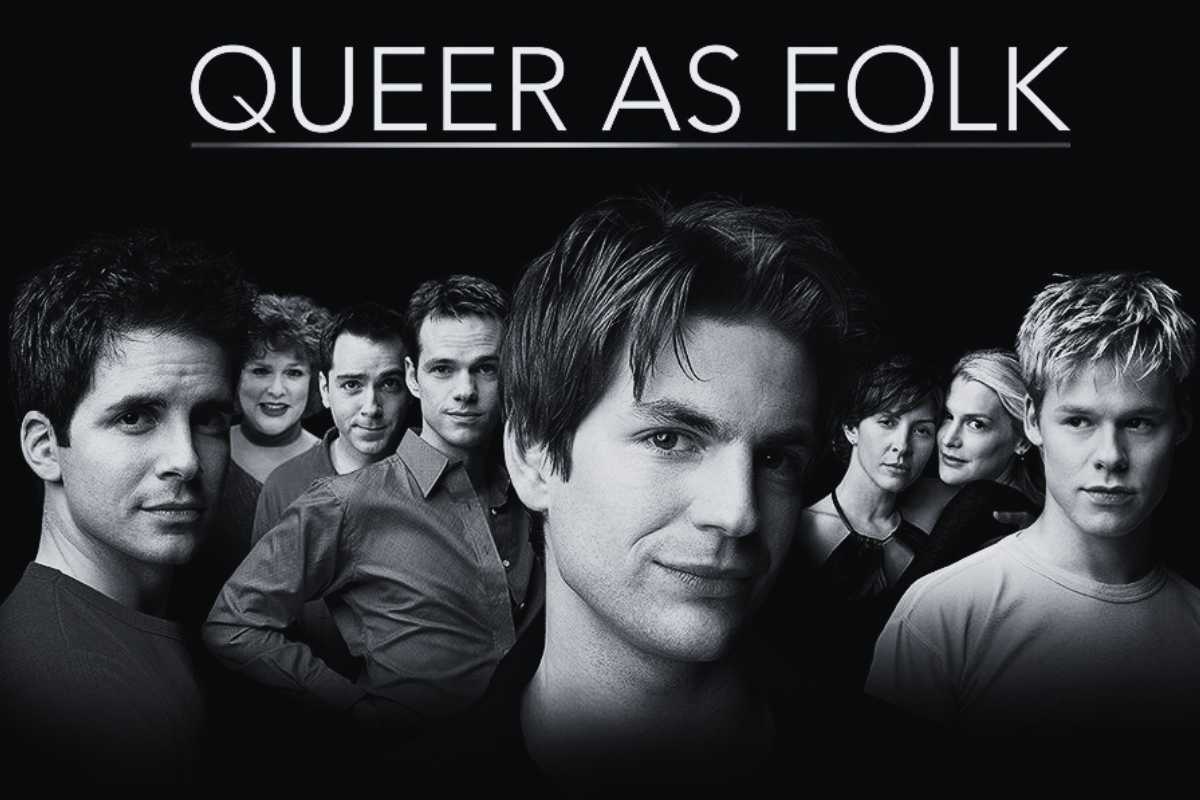
The first lesbian kiss on television occurred between characters, C.J. Lamb (played by Amanda Donohoe) and Abby (Michele Greene).
In 1992, MTV debuted The Real World, where seven strangers to live together in a house with every moment of their lives recorded. The debut season featured Norman Korpi, an openly gay man who lived New York City. His sexual orientation takes center stage during the season when Korpi develops a serious relationship.
The 1993 film starring Tom Hanks, tells the story of gay man Andrew Beckett, who asks lawyer Joe Miller (Denzel Washington) to help him sue his employers, who fired him after discovering he has AIDS. The film becoming the 9th highest-grossing film of 1993 and Hanks won the Academy Award for Best Actor at the 66th Academy Awards.
The first lesbian wedding on television took place with characters Carol (Jane Sibbett) and Susan (Jessica Hecht).
The American road comedy film, Too Wong Foo, Thanks for Everything! Julie Newmar, stared Wesley Snipes, Patrick Swayze, and John Leguizamo as three New York City drag queens who embark on a road trip was notable for being the first major Hollywood studio movie to center on drag queens. The film held the number 1 spot in the North American box office for two weeks earning Swayze and Leguizamo Golden Globe Award nominations.
The American film based on the French play & film, La Cage aux Folles, tells the story of Armand Goldman, the openly gay owner of a drag club in South Beach called The Birdcage; and his life partner Albert, an effeminate and flamboyant man, who plays Starina, the star attraction of the club. Chaos ensues when Armand’s son Val brings home his fiancée and her ultra-conservative parents to meet them. Starring Robin Williams and Nathan Lane, the film held the number one spot for three weeks.
Set in New York City, the show focuses on the friendship between best friends Will Truman (Eric McCormack), a gay lawyer, and Grace Adler (Debra Messing), a straight interior designer. The show ran for 8 seasons, followed by a brief 3 season return, and is one of the most successful television series with gay principal characters.
Based on the British series of the same title, the show follows the lives of five gay men living in Pittsburgh, Pennsylvania. Queer as Folk quickly became the number one show on the Showtime roster and included groundbreaking scenes beginning with the first episode, which depicts the first sex scene between two men shown on American television.
The American reality television series featured a team of gay professionals in the fields of fashion, personal grooming, interior design, entertaining, and culture collectively known as the “Fab Five” performing makeovers; revamping wardrobe, redecorating, and offering lifestyle advice. The show quickly became a success, winning an Emmy Award for Outstanding Reality Program in 2004.
The first lesbian sex scene was depicted when girlfriends Willow Rosenberg and Tara Maclay were in bed together. Though not a sex scene, it was considered the first scene of its kind for a broadcast network series.
The series followed the lives of a group of lesbian and bisexual women who live in West Hollywood, California. It featured television’s first ensemble cast of lesbian and bisexual female characters, and its portrayal of lesbianism was groundbreaking at the time. It was also the first television series written and directed by predominantly queer women.
In 2005, the popular cartoon series became the first cartoon to dedicate an entire episode to the topic of same-sex marriage.
In 1963, cowboy Jack Twist (Jake Gyllenhaal) and ranch hand Ennis Del Mar (Heath Ledger) keep up their tortured and sporadic affair over the course of 20 years. The film was well-received, nominated for Best Picture and won for Best Director, Best Adapted Screenplay, and Original Score.
Netflix’s most-watched as well as its longest-running original series about a woman facing a year long sentence in a minimal security prison, featured transgendered actress Laverne Cox as Sophia Burset. The role earned her an Primetime Emmy nomination, making her the first transgender person to be nominated for an Emmy Award.

An Evolving Digital Exhibit Celebrating LGBTQ+ History in the United States
PRIDE! Our Story is a dynamic and evolving digital exhibit dedicated to honoring and preserving the rich history of the LGBTQ+ rights movement in the United States. Founded by graphic designer and proud LGBTQ+ community member John N. Daniello, the exhibit aims to educate, inspire, and uplift by sharing the powerful stories of resilience, advocacy, and progress.
The project began in 2023 in response to a request from a local historical society. Daniello created a compelling timeline highlighting key moments in American LGBTQ+ history. What started as a local initiative quickly gained traction through media coverage, social platforms, and community support.
“As a graphic designer and a proud member of the LGBTQ+ community, this project quickly became one of the most meaningful endeavors of my career,” said Daniello. “The overwhelmingly positive response confirmed PRIDE! is a story that needs to be told far and wide.”
In 2024, he expanded the project into its current online form as PRIDE! Our Story, delving deeper into the history and spotlighting the extraordinary individuals who have shaped the LGBTQ+ rights movement over the last century. As a living exhibit, it continues to grow with new stories, visuals, and resources—ensuring the legacy of the movement remains visible and accessible to all.
About the Creator
John N. Daniello is a graphic designer and proud member of the LGBTQ+ community. With a deep commitment to visual storytelling, he brings a unique blend of creative insight and lived experience to PRIDE! Our Story. His goal is simple: to honor the past, celebrate progress, and inspire the future. For more information, visit his Bio Page.
This project is a growing celebration of LGBTQ+ history.
If you’d like to see something added, please send a message.
